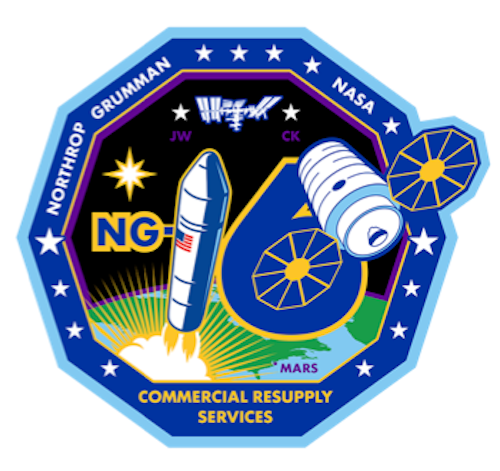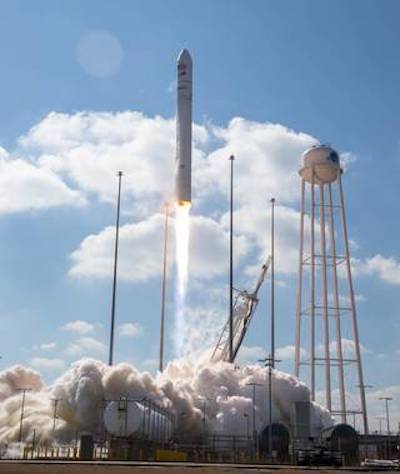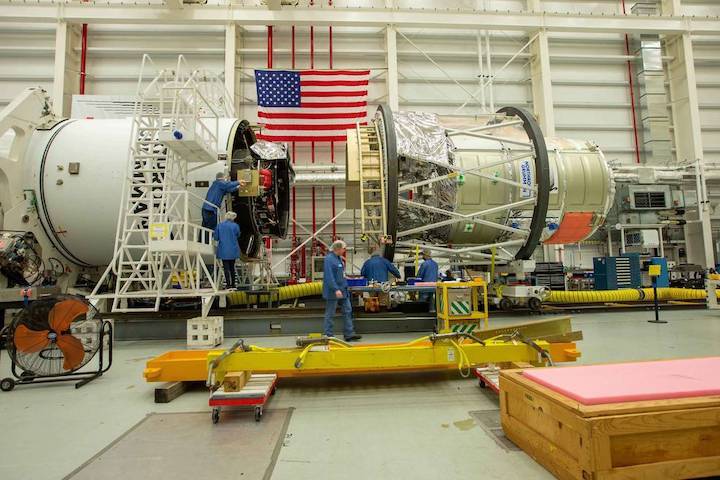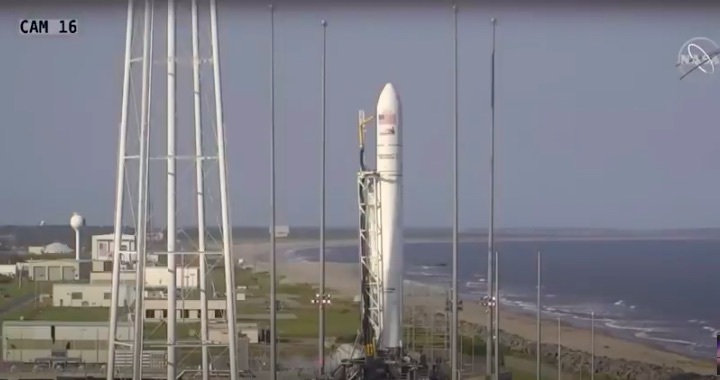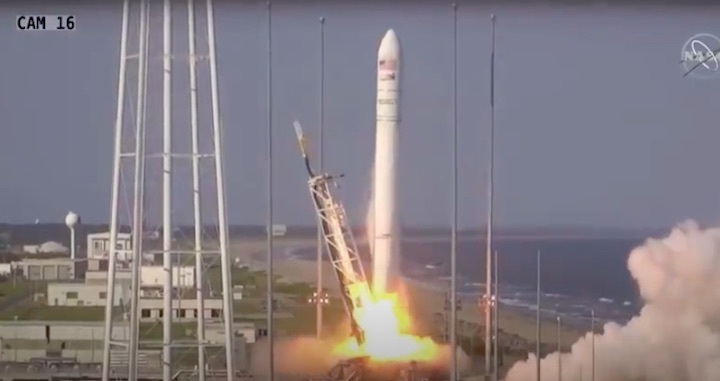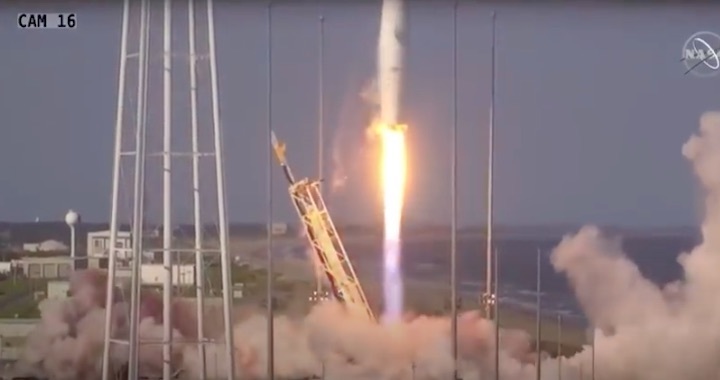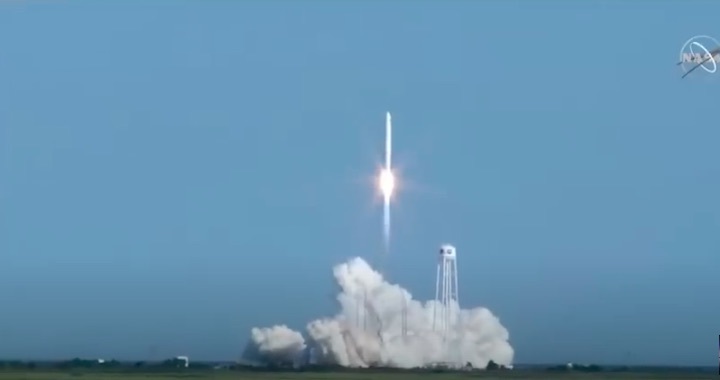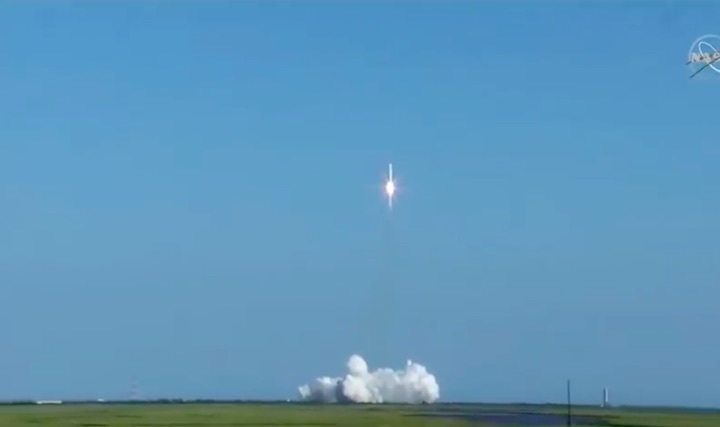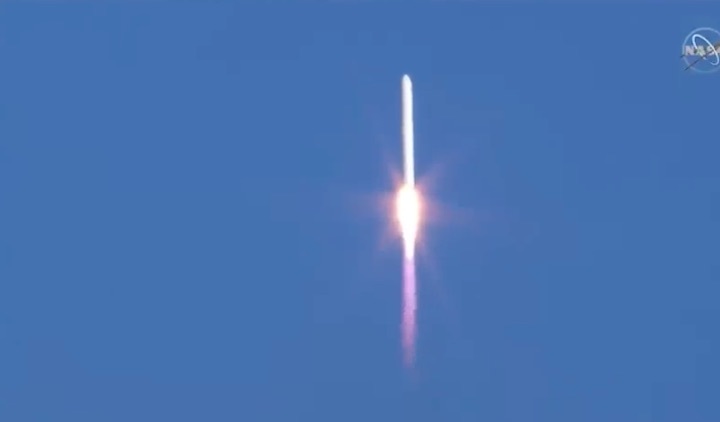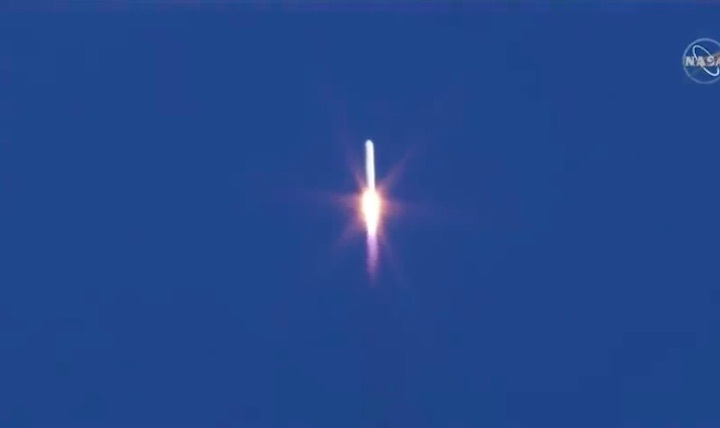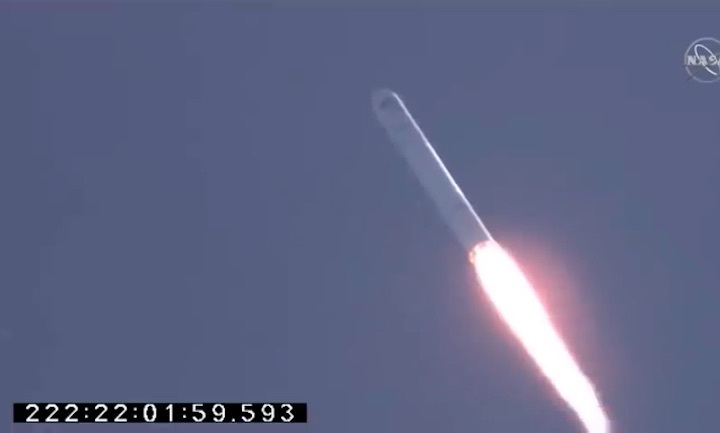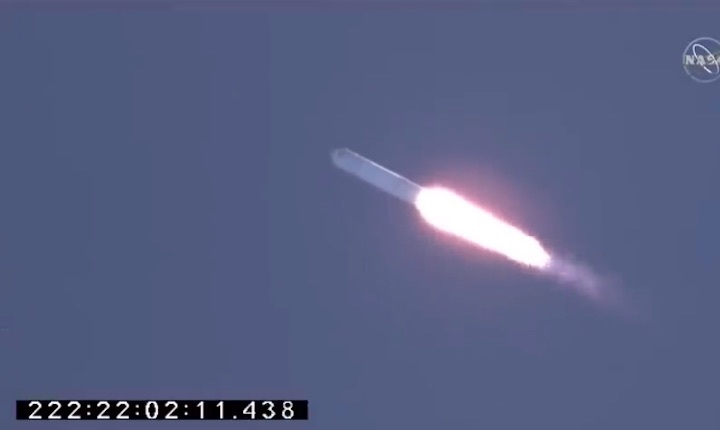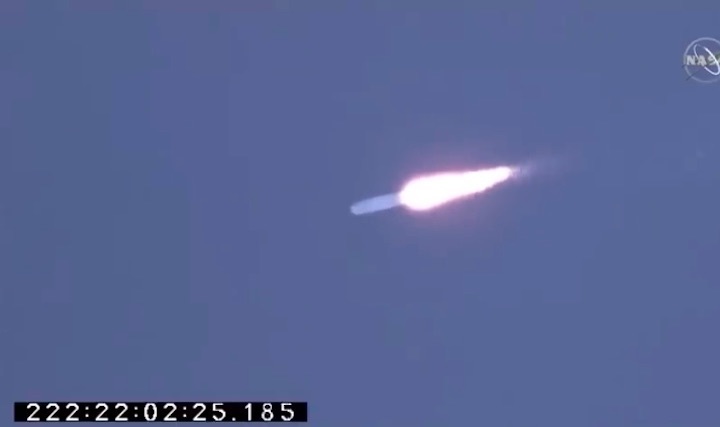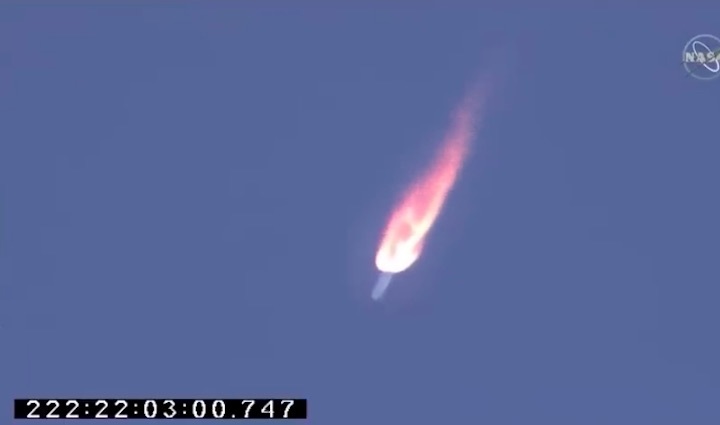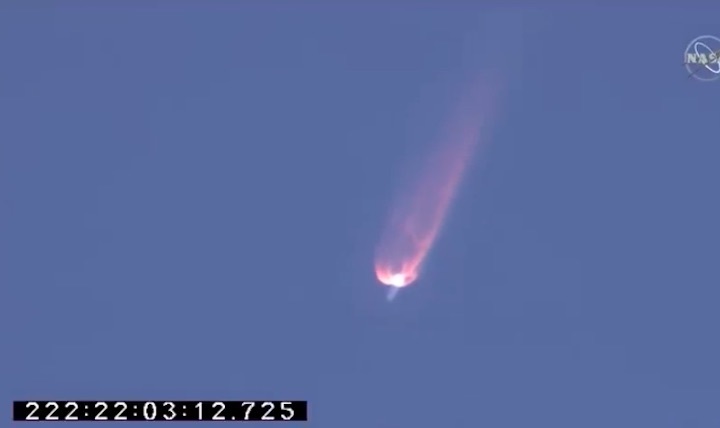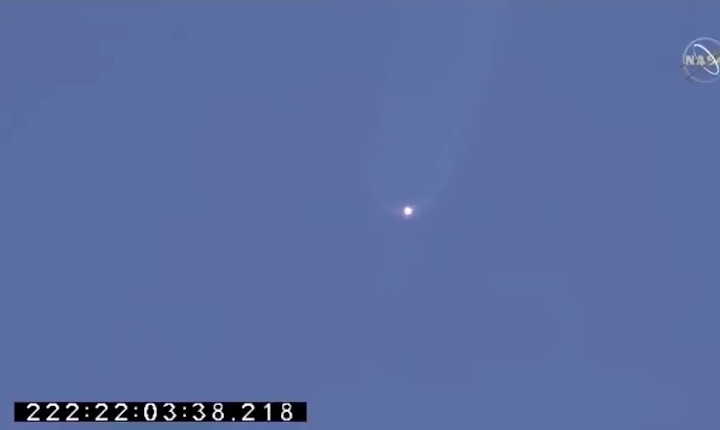
Northrop Grumman packed last-minute cargo into a commercial Cygnus supply ship Monday on a launch pad in Virginia, putting the finishing touches on a spacecraft set for liftoff Tuesday atop an Antares rocket on a mission to the International Space Station.
The automated cargo freighter, named the “S.S. Ellison Onizuka” after one of the astronauts who died in the space shuttle Challenger accident, is loaded with 8,210 pounds (3,723 kilograms) of supplies and experiments.
The Cygnus supply ship is set to blast off from pad 0A at the Mid-Atlantic Regional Spaceport on Wallops Island, Virginia, at 5:56:05 p.m. EDT (2156:05 GMT) Tuesday, the opening of a five-minute launch window to send the cargo mission in pursuit of the space station.
A 139-foot-tall (42.5-meter) Antares rocket will propel the Cygnus spacecraft into orbit. The two-stage rocket rolled out of Northrop Grumman’s Horizontal Integration Facility on Friday for the one-mile trip to pad 0A.
Ground crews raised the rocket vertical on the launch pad for checkouts over the weekend, then lowered the Antares horizontal again to begin the process of loading time-sensitive cargo into the Cygnus spacecraft.
Once a mobile clean room moved into place, technicians removed the “pop top” nose cone from the Antares rocket and opened the Cygnus hatch. The final cargo items to be loaded into the Cygnus spacecraft included biological experiments and fresh food for the space station’s seven-person crew.
By early Tuesday, the late cargo load should be complete, allowing teams to close the Cygnus hatch and re-install the upper part of the rocket’s payload fairing. The rocket is scheduled to be lifted vertical again around 5 a.m. EDT (0900 GMT) Tuesday.
The five-hour countdown will begin shortly before 1 p.m. EDT (1700 GMT), beginning with power-up of the Antares flight computer and testing of the rocket’s telemetry transmitters and navigation system. Loading of kerosene and liquid oxygen propellants into the Antares first stage will begin about an hour-and-a-half before liftoff.
There’s an 80 percent chance of good weather Tuesday for launch of the Antares rocket from Virginia Eastern Shore.
The Northrop Grumman resupply mission, named NG-16, will be the 16th cargo delivery to the space station by a Cygnus supply ship since 2013. It will be the 15th launch of an Antares rocket, which has suffered one failure on its prior 14 missions.
The first stage’s two Russian-made RD-181 main engines will roar to life 3.7 seconds before liftoff. After the engines throttle up to full power, hold-down bolts will release to allow the Antares to begin its climb into space.
The RD-181 engines will produce about 864,000 pounds of thrust to steer the rocket on a course southeast from Wallops.
At about T+plus 3 minutes, 24 seconds, the Antares will shed its liquid-fueled first stage, followed soon after by separation of the rocket’s payload fairing and interstage adapter. A solid-fueled Castor 30XL upper stage will ignite at about T+plus 4 minutes, 7 seconds, for nearly three minutes to inject the Cygnus supply ship into a preliminary orbit in pursuit of the space station. The Cygnus cargo craft is scheduled to deploy from the Antares second stage at about T+plus 8 minutes, 52 seconds.
The Cygnus will unfurl its two fan-shaped solar panels within a couple of hours after liftoff, allowing the spacecraft to start charging batteries for the day-and-a-half trip to the space station. Astronaut Megan McArthur aboard the research complex will use the Canadian-built robotic arm to capture the commercial resupply vessel around 6:10 a.m. EDT (1010 GMT) Thursday, assuming an on-time launch Tuesday.

NASA has multibillion-dollar contracts with Northrop Grumman, SpaceX, and Sierra Nevada Corp. to ferry cargo to and from the space station. Northrop Grumman’s two resupply contracts covers 19 operational cargo missions through 2023.
The cargo launching aboard the Cygnus spacecraft includes a technology demonstration to look at how future space explorers could 3D-print materials out of lunar soil.
The 3D printing demonstration, developed by Redwire, will use a “lunar regolith simulant” with physical properties and chemical composition similar to that of the moon’s soil, said Howie Schulman, the project lead for the Redwire Regolith Print mission.
The simulant is a fine gray powder, which will be combined with a thermoplastic binder to create the feedstock for the 3D printing experiment.
The experiment, developed in partnership with NASA’s Marshall Space Flight Center, will use Redwire’s commercially-operated Additive Manufacturing Facility on the space station. Redwire says it’s the first time that material designed to mimic lunar soil has been used for the 3D printing in space.
Hardware launching on the NG-16 mission for the 3D printing demonstration includes three custom-designed printing heads and three print bed surfaces, according to Redwire.
The material samples printed during the tech demo will be returned to Earth for analysis.
NASA and commercial companies are interested in 3D printing technology that could help manufacture components and infrastructure on the surface of the moon. Future lunar explorers could manufacture their own hardware instead of bringing materials from Earth, or relying on costly cargo shipments.
The NG-16 mission will also deliver spare parts for the space station’s toilet, a stowage rack for the lab’s airlock, and cooling fans for the station’s life support system.
The Cygnus spacecraft is also set to deliver a “mod kit” to configure the space station’s solar power truss for the arrival of the next pair of new roll-out solar arrays in late 2022. The first two new solar arrays were delivered to the station in June by a SpaceX Dragon cargo capsule, beginning an upgrade that will expand the lab’s power generation capability for another decade of operations.
Astronauts will install the “mod kit” on the station’s huge power truss ahead of the arrival of the next two roll-out solar arrays.
Other payloads set for launch Tuesday include a biomedical research investigation looking at muscle loss in microgravity, and an experiment to test a more efficient thermal control system that could be used to dissipate heat on future spacecraft.
The Cygnus spacecraft is scheduled to remain berthed at the space station for about three months.
After departing the research complex in November, the Cygnus cargo craft will head for a destructive re-entry over the South Pacific Ocean, disposing of several tons of trash packed inside its pressurized compartment by space station astronauts.
One of the final experiments of the mission will be a test of heat shield technology using three small capsules stowed inside the Cygnus spacecraft.
When the Cygnus breaks apart during re-entry, the capsules will plunge deeper into the atmosphere protected by heat shields made of different types of materials.
Led by engineers at the University of Kentucky, the experiment will collect data from sensors embedded in each capsule’s heat shield. The measurements will be transmitted back to the science team via the Iridium satellite network.
The developers of the re-entry experiment say the data will help validate computer models used in spacecraft design.

